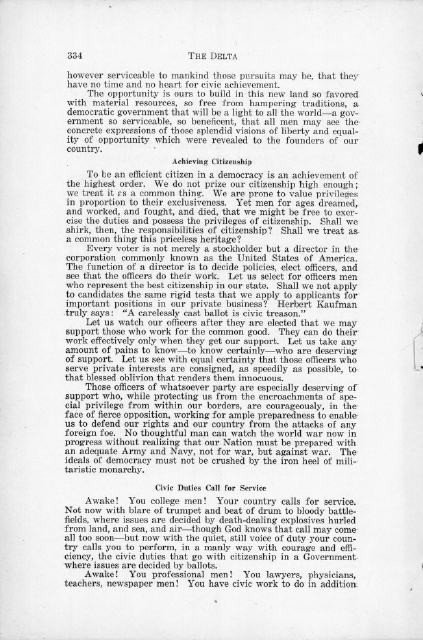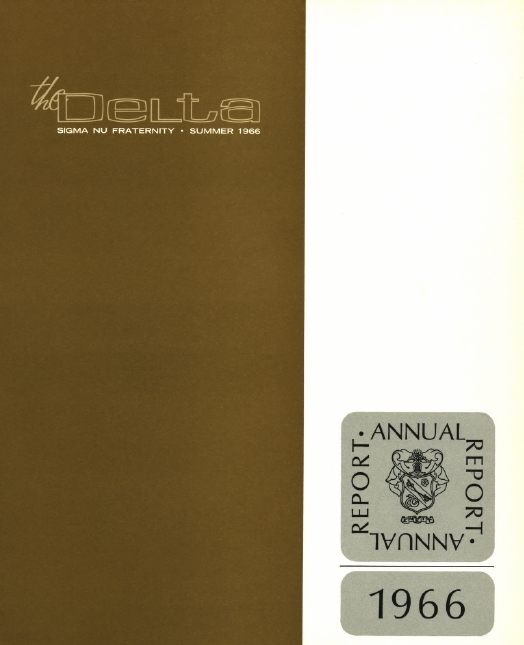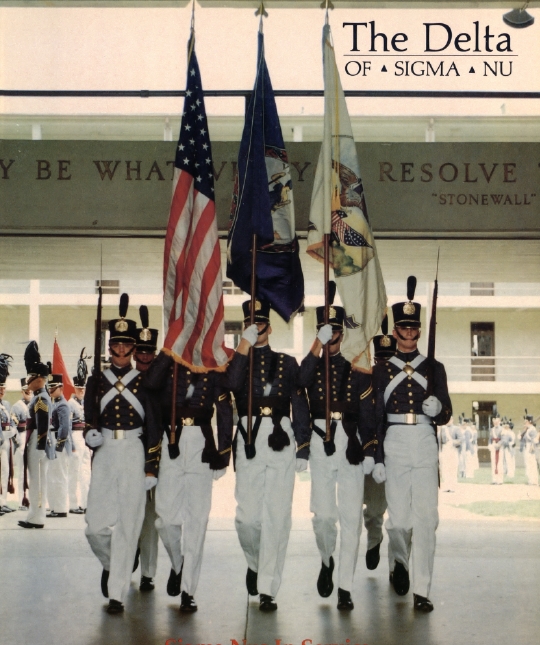History of The Delta
Conversation
100 Years Ago (Volume 33, Number 5)

The May, 1916 issue of The Delta begins with an essay titled “A Call to Achievement” by F.B. Linton (Mount Union) on citizenship and civic duty. He appropriately writes a statement that strikes true even today: “A democracy offers great opportunity for individual achievement. There are no arbitrary restrictions to stop the citizen from entering any field of service to which he feels called. The will of no man, except only his own, can hinder him from achieving to the full limit of his ability.”
This poignant topic was an appropriate lead into a listing of various Sigma Nus serving prominently in their government and communities including several sitting congressman such as Charles G. Edward (Georgia), Harvey Helm (Central University), John M. Evans (Missouri), Randall Walker (Georgia), Clifton N. McArthur (Oregon), Whitmell P. Martin (Louisiana State/Virginia), and Henry B. Steagall (Alabama).
50 Years Ago (Volume 83, Number 4)

The summer issue of The Delta in 1966 serves as the annual report of Sigma Nu from Executive Director Richard R. Fletcher (Penn State). This report includes the milestone of a 20% increase in initiated members from the previous year resulting in 3,010 initiates during 1965-66 bringing the Fraternity’s total initiates count to 94,514.
Some other major achievements included acceptance of an invitation to colonize at the University of South Dakota giving Sigma Nu a foothold in the last continental state without a chapter, an average chapter manpower size of 65 men, 57.5% of living members receiving The Delta, and the birth of today’s Leadership Consultant program with two alumni traveling across the country to conduct two to three day visits at 117 chapters!
25 Years Ago (Volume 108, Number 2)

On the heels of the victory in Operation Desert Storm came the summer issue of The Delta in 1991 devoted solely to recounting the proud military history of Sigma Nu and the powerful stories of our citizen soldiers who we proudly call brothers. However, one story stands out. It is the story of U.S. Navy Captain Gerald L. Coffee (UCLA). Captain Coffee served as a naval aviation pilot on the carrier USS Kitty Hawk during the Vietnam War and was taken prisoner after being shot down during a reconnaissance mission in early 1966. “Our airspeed at ejection was 680 knots, and I was knocked unconscious immediately,” Coffee recounts.
Following his capture Captain Coffee was taken to the notorious Hoa Lo Prison, nicknamed “Hanoi Hilton,” in the North Vietnam capitol of Hanoi. The name may sound familiar as it also held Senator John McCain along with hundreds of other POWs. To say the accommodations were Spartan would be an understatement. “One small can in the corner of the cell was to take care of all my physical needs. The cell just reeked of the human misery – decades of human misery – that had been there before us.” To stay physically fit Coffee recounted that he and his fellow prisoners would pace their small cells to walk several miles a day, “Three steps and turn, three steps and turn – that was as far as you could go in any direction. We called it ‘the Hanoi Shuffle.’”
To stay mentally fit the POWs took to memorizing anything and everything they could. “At one time, I had memorized in alphabetical order the names of over 450 prisoners there…we memorized the books of the Bible and, alphabetically, the capital of ever state. We also learned poetry.” By the time Coffee was released he had about forty poems committed to memory. Perhaps the most powerful symbol of solidarity during his stay in the prison was every Sunday when the prisoners would tap along their walls a “church call.” “Every man would then stand in his own cell and, in some semblance of togetherness, we would recite the pledge of allegiance to our flag.”
Brother Coffee finally returned home in 1973 after seven years and nine days of captivity.